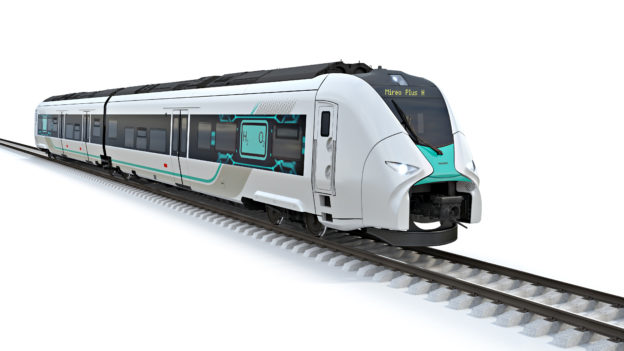
Deutsche Bahn (DB) and Siemens Mobility in November announced the launch of their joint project “H2goesRail”. Together, they will build and test a next-generation hydrogen railway system in Germany. Besides the trains and hydrogen fueling infrastructure, the project will also introduce a rapid refueling method that takes just 15 minutes to complete. Siemens Mobility is a separately managed entity under its parent company Siemens and specializes in the development of intelligent rail and traffic solutions.
DB is currently revamping its maintenance facility in the German city of Ulm to accommodate hydrogen rail vehicles. The project is located in the state of Baden-Württemberg and cover the rail link between the cities of Tübingen, Horb and Pforzheim. Siemens Mobility will be designing and building the prototype of the hydrogen rail vehicle. According to the reporting from the media and the information from the official sources, the new hydrogen rail vehicle is named the Mireo Plus H. It is the latest addition to the Mireo family of trains from Siemens Mobility. Based on the development schedule, the prototype will be completed and enter the 120,000-kilometer trial in 2024.
Michael Peter, CEO of Siemens Mobility, stated that his company and DB are collaborating to create a comprehensive hydrogen railway system. In addition to a hydrogen-based traction technology, they will also be devising an innovative refueling method that can fully replenish the hydrogen tank of the rail vehicle within 15 minutes. In terms of specifications, the Mireo Plus H will have 1.7 megawatts of traction power that enables an acceleration of 1.1 meter per second squared and a top speed of 160 kilometers per hour. Its range will be around 600 kilometers on a full tank.

(Source: Siemens Mobility.)
Germany is in the process of electrifying its entire rail network and phasing out traditional diesel-powered trains. However, hydrogen fuel cell represents another viable option since this technology has already been introduced to passenger cars and buses. Since hydrogen emits no CO2 emissions and can be harvested using environment-friendly processes, the market is bullish on it being the alternative to fossil fuels. Many countries have incorporated hydrogen-based technologies into their blueprints for the future development of their transportation networks. DB pointed out that its joint project with Siemens Mobility has the potential to cut CO2 emissions by 3.3 million tons per year.
Presently, around 40% of Germany’s railway network is not electrified; and the number of diesel-powered trains operating in the country is 4,000. If they are all replaced by hydrogen-powered trains, it will lead to a 45% reduction in CO2 emissions from the railway network. Moreover, the adoption of hydrogen fuel cells saves the infrastructure costs incurred from the electrification process (e.g., the costs related to the installation of power cables and power distribution equipment).
Germany has been the premier testing ground for hydrogen rail vehicles. CORADIA iLINT, which was developed by French firm Alstom and is the world’s first passenger train run on hydrogen fuel cells, entered service at Hanover in 2018.
Peter noted that Europe has around 10,000-15,000 trains that will need to be replaced in 10-15 years. Compared with diesel-powered trains, hydrogen-powered trains actually have a lower maintenance cost during the lifecycle. Siemens Mobility currently estimates that the overall cost of a Mireo Plus H will be 5-10 million euros.
(Credit for the image at the top of the article goes to Siemens Mobility.)


